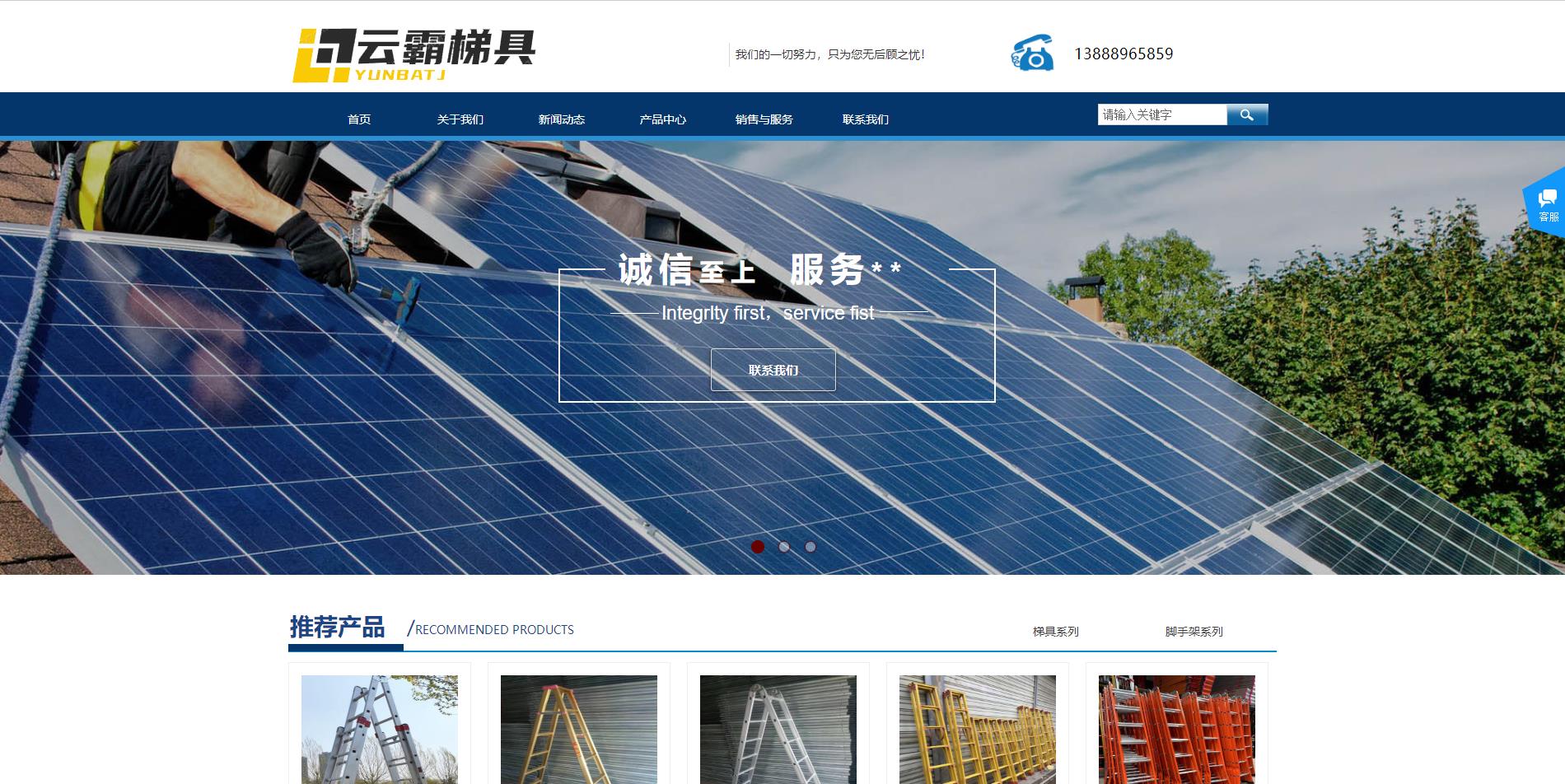用 Vue 3.0 来写个小程序框架
发表时间:2021-1-5
发布人:葵宇科技
浏览次数:25
由于小程序的开发起来比较原始复杂且繁琐,跟我们主流的开发方式差距很大,所以为了提高我们开发小程序的效率,市面上出现过很多的小程序的框架:mpvue,Taro,uni-app 等等,这些框架或多或少地将我们带到现代化的开发方式中来,他们可以让你使用 React 或者 Vue 来开发小程序。今天就分享一个如何利用 Vue 3.0 来构建一个小程序的框架。
简单看看 Vue 3.0 有哪些新特性:
Composition-APIComposition-API 是一套让你可以很方便抽取逻辑函数的 API,相比于之前的 Options API,其代码组织能力更强,相同的逻辑可以写在同一个地方,各个逻辑之间界限分明。
看下面的例子即可说明:

Fragment, Teleport
有点类似于 React 的 Fragment,使得我们在写 Vue 的模板时不再限制于需要一个根节点,在 Vue3.0 里可以有多个根节点。

Teleport 用一种直接声明的方式来将子组件安装到 DOM 中的其他位置,类似于 React 的 Portal,但是功能更加强大。

更好的 TypeScript 支持
现在 Vue 3.0 的代码都是由 TS 来编写,加上 Composition-Api,再写业务代码的时候可以无缝切换到 TS 。
Custom Render API
利用这套 API 可以很方便的构建出自定义的渲染层,这个也是我们接下来需要重点讲的。
import {
createRenderer,
CreateAppFunction,
} from '@vue/runtime-core';
export const { render, createApp: baseCreateApp } = createRenderer({
patchProp, // 修改 props 的函数
...nodeOps, // 修改 dom 节点的函数
});
render();
复制代码小程序
要开发一个小程序的页面基本上我们只需要四个文件:
index.js
index.js 就是我们写代码逻辑的地方。
- 有一个 Page 函数,里面是对象配置,类似于 Vue 的 options 配置一样,有一个 data 属性,存放着初始化的数据。
- 如果想要修改数据改变视图,又需要像 react 一样,需要调用 setData 去修改视图。
Page({
data: {
text: 'hello word'
},
onLoad() {
this.setData({
text: 'xxxxx'
})
},
onReady() {},
onShow() {},
onHide() {},
onUnload() {},
handleClick() {
this.setData({
text: 'hello word'
})
}
})
复制代码index.ttml
index.ttml 是我们写视图模板的地方。
- 类似于 vue 的 template,我们需要先定义模板才能显示视图
- 注意: 不能直接在 index.js 里面去修改定义的模板的 DOM,只能先定义好,这是由于小程序架构双线程导致的,分为逻辑层和渲染层,我们写的 index.js 代码跑在逻辑层里面,index.ttml 跑在渲染层里面,两个线程就通过 setData 进行数据交换。

index.json
配置小程序页面和组件的地方,暂时不列出参数,但是一定要有这个文件。
index.ttss
顾名思义,就是写样式的地方,类似于 CSS。
模板
小程序为了封装的方便,可以先提前定义一个模板,然后再需要的地方引入模板即可,有点像 ejs 和 pug 的 import template 的用法

动态模板
上面说到,小程序里面不能动态的修改 DOM 节点,只能提前定义好 template,然后通过 setData 的形式去修改视图。
但是小程序又有个比较动态的特性,叫做动态选择模板。
// 使用这个模板
<template is="{{type}}" data="http://www.wxapp-union.com/{{item: item}}"/>
复制代码上面 is 属性的 type 就是动态的,它是个变量,可以根据 type 的值来选择不同的模板,比如 type 为 view 时,就会渲染我们提前定义好的 view template。
自定义渲染层(非常重要)
重头戏来了,我们该如何利用 Vue 3.0 方便的自定义渲染层 结合 小程序的动态选择模板的特性来去写一个小程序的框架呢?
import {
createRenderer,
CreateAppFunction,
} from '@vue/runtime-core';
export const { render, createApp: baseCreateApp } = createRenderer({
patchProp, // 修改 props 的函数
...nodeOps, // 修改 dom 节点的函数
});
复制代码我们可以看到 `createRenderer`函数需要两个参数,一个是 patchProp,一个是 nodeOps。
nodeOps
nodeOps 代表着修改 node 节点的一些操作,从而可以去改变视图,比如在 Vue 3.0 的浏览器环境中,是这么写的:
import { RendererOptions } from '@vue/runtime-core'
export const svgNS = 'http://www.w3.org/2000/svg'
const doc = (typeof document !== 'undefined' ? document : null) as Document
let tempContainer: HTMLElement
let tempSVGContainer: SVGElement
// 浏览器环境下的 nodeOps
export const nodeOps: Omit<RendererOptions<Node, Element>, 'patchProp'> = {
insert: (child, parent, anchor) => {
parent.insertBefore(child, anchor || null)
},
remove: child => {
const parent = child.parentNode
if (parent) {
parent.removeChild(child)
}
},
createElement: (tag, isSVG, is): Element =>
isSVG
? doc.createElementNS(svgNS, tag)
: doc.createElement(tag, is ? { is } : undefined),
createText: text => doc.createTextNode(text),
createComment: text => doc.createComment(text),
setText: (node, text) => {
node.nodeValue = http://www.wxapp-union.com/text
},
setElementText: (el, text) => {
el.textContent = text
},
parentNode: node => node.parentNode as Element | null,
nextSibling: node => node.nextSibling,
querySelector: selector => doc.querySelector(selector),
setScopeId(el, id) {
el.setAttribute(id,'')
},
cloneNode(el) {
return el.cloneNode(true)
},
}
复制代码实际上 Vue 不管数据怎么变化,要将数据显示到视图上都是调用了 DOM 的一些 API,像上面的 doc.createElement 和 doc.createTextNode 等等。
VNode
是由于小程序的限制,我们不能直接像浏览器环境一样去修改 DOM,那我们可以先模仿浏览器的环境,创造出一个虚拟的 DOM,我们叫做 VNode。
class VNode {
id: number;
type: string;
props?: Record<string, any>;
text?: string;
children: VNode[] = [];
eventListeners?: Record<string, Function | Function[]> | null;
parentNode?: VNode | null;
nextSibling?: VNode | null;
constructor({
id,
type,
props = {},
text,
}: {
id: number;
type: string;
props?: Record<string, any>;
text?: string;
}) {
this.type = type;
this.props = props;
this.text = text;
this.id = id;
}
appendChild(newNode: VNode) {
if (this.children.find((child) => child.id === newNode.id)) {
this.removeChild(newNode);
}
newNode.parentNode = this;
this.children.push(newNode);
setState({ node: newNode, data: newNode.toJSON() }); // 调用了小程序的 setData
}
insertBefore(newNode: VNode, anchor: VNode) {
newNode.parentNode = this;
newNode.nextSibling = anchor;
if (this.children.find((child) => child.id === newNode.id)) {
this.removeChild(newNode);
}
const anchorIndex = this.children.indexOf(anchor);
this.children.splice(anchorIndex, 0, newNode);
setState({
node: this,
key: '.children',
data: this.children.map((c) => c.toJSON()),
}); // 调用了小程序的 setData
}
removeChild(child: VNode) {
const index = this.children.findIndex((node) => node.id === child.id);
if (index < 0) {
return;
}
if (index === 0) {
this.children = [];
} else {
this.children[index - 1].nextSibling = this.children[index + 1];
this.children.splice(index, 1);
}
setState({
node: this,
key: '.children',
data: this.children.map((c) => c.toJSON()),
});
}
setText(text: string) {
if (this.type === TYPE.RAWTEXT) {
this.text = text;
setState({ node: this, key: '.text', data: text });
return;
}
if (!this.children.length) {
this.appendChild(
new VNode({
type: TYPE.RAWTEXT,
id: generate(),
text,
})
);
return;
}
this.children[0].text = text;
setState({ node: this, key: '.children[0].text', data: text });
}
path(): string {
if (!this.parentNode) {
return 'root';
}
const path = this.parentNode.path();
return [
...(path === 'root' ? ['root'] : path),
'.children[',
this.parentNode.children.indexOf(this) + ']',
].join('');
}
toJSON(): RawNode {
if (this.type === TYPE.RAWTEXT) {
return {
type: this.type,
text: this.text,
};
}
return {
id: this.id,
type: this.type,
props: this.props,
children: this.children && this.children.map((c) => c.toJSON()),
text: this.text,
};
}
}
复制代码可以看到我们创建的 VNode 类似于 DOM,也有一些操作 Node 节点的方法,最终生成一个 Node 树。我们就可以仿照 vue 浏览器环境的 nodeOps 写法,先去修改我们的 VNode,在修改 Node 节点的同时里面我们可以去调用小程序的 setData 方法。
// 小程序环境下的 nodeOps,主要是修改 VNode
export const nodeOps = {
insert: (child: VNode, parent: VNode, anchor?: VNode) => {
if (anchor != null) {
parent.insertBefore(child, anchor);
} else {
parent.appendChild(child);
}
},
remove: (child: VNode) => {
const parent = child.parentNode;
if (parent != null) {
parent.removeChild(child);
}
},
createElement: (tag: string): VNode =>
new VNode({ type: tag, id: generate() }),
createText: (text: string): VNode =>
new VNode({ type: TYPE.RAWTEXT, text, id: generate() }),
createComment: (): VNode => new VNode({ type: TYPE.RAWTEXT, id: generate() }),
setText: (node: VNode, text: string) => {
node.setText(text);
},
setElementText: (el: VNode, text: string) => {
el.setText(text);
},
parentNode: (node: VNode): VNode | null => node.parentNode ?? null,
nextSibling: (node: VNode): VNode | null => node.nextSibling ?? null,
querySelector: (): VNode | null => getApp()._root,
setScopeId(el: VNode, id: string) {
if (el.props) {
const className = el.props.class;
el.props.class = className ? className + ' ' + id : id;
}
},
};
复制代码toJSON()
光是创造出 VNode 还不够,我们得让它渲染到小程序里面去,小程序要先渲染出数据必须是提前在 data 属性里面定义的数据,而且只能是普通的数据类型。
Page({
data: {
root: {
type: 'view',
props: {
class: 'xxx'
},
children: [...]
}
}
})
复制代码toJSON 方法就是可以将一个 VNode 给格式化成普通的对象,让小程序可以渲染出数据。
接口类型如下:
interface RawNode {
id?: number;
type: string; // view,input, button
props?: Record<string, any>;
children?: RawNode[];
text?: string; // 文本
}
复制代码是不是跟 VDOM 的结构很熟悉?
path()
我们可以看到在我们定义的 VNode 里面,里面有个 path() 方法,这个方法就是获取 Node 节点在整个节点树的一个路径,然后可以利用 path 去修改某一个特定的 Node 节点。
const path = Node.path(); // root.children[2].props.class
// 然后我们可以直接这样来更新小程序
this.setData({
'root.children[2].props.class': 'xxxxx'
})
复制代码结合动态选择模板
<template name="$_TPL">
<block tt:for="{{root.children}}" tt:key="{{id}}">
<template is="{{'$_' + item.type}}" data="http://www.wxapp-union.com/{{item: item}}"/>
</block>
</template>
<template name="$_input">
// input 有三个属性 class 和 bindinput 和 value 对应 vue 文件 template 里的 input 上的属性 class @input value
<input class="{{item.props['class']}}" bindinput="{{item.props['bindinput']}}" value="http://www.wxapp-union.com/{{item.props['value']}}">
<block tt:for="{{item.children}}" tt:key="{{id}}">
<template is="{{'$_' + item.type}}" data="http://www.wxapp-union.com/{{item}}"/>
</block>
</input>
</template>
<template name="$_button">
// button 有两个属性 class 和 bindTap 对应 vue 文件 template 里的 button 上的属性
<button class="{{item.props['class']}}" bindtap="{{item.props['bindtap']}}">
<block tt:for="{{item.children}}" tt:key="{{id}}">
<template is="{{'$_' + item.type}}" data="http://www.wxapp-union.com/{{item}}"/>
</block>
</button>
</template>
<template name="$_view">
<view class="{{item.props['class']}}" bindtap="{{item.props['bindtap']}}">
<block tt:for="{{item.children}}" tt:key="{{id}}">
<template is="{{'$_' + item.type}}" data="http://www.wxapp-union.com/{{item}}"/>
</block>
</view>
</template>
<template name="$_rawText">{{item.text}}</template>
复制代码编译层
我们写的代码肯定是 Vue 的代码,不是上面的模板代码,那么 Vue 的代码改怎么样去编译到上面的模板代码呢?
先看一下整体架构图:

Template
如果我们写的业务代码是常见的 vue 指令模板模式,那么我们可以在底层使用 @vue/compile-core 来 parse Vue 的 template,然后遍历 parse 后的 AST,收集其中用到的 tag 和 props。
import { parse } from '@vue/compiler-sfc';
import {
baseCompile,
} from '@vue/compiler-core';
const { descriptor } = parse(source, {
filename: this.resourcePath,
});
// 遍历这个 ast 去收集 tag 和 props
const { ast } = baseCompile(descriptor.template.content);
复制代码JSX/TSX
如果我们写的业务代码是 JSX/TSX,那么这边可以写个收集 Tag 和 props 的 babel plugin,在 babel plugin 里面去遍历 AST,收集 Tag 和 props。
最终生成的 ttml
假如我们有一个 .vue 文件:
<template>
<div class="container is-fluid">
<div class="subtitle is-3">Add todo list</div>
<div class="field">
<div class="control">
<input class="input is-info" @input="handleInput" :value="http://www.wxapp-union.com/todo" />
</div>
</div>
<button class="button is-primary is-light" @click="handleAdd">Add +</button>
</div>
</template>
<script>
import { ref } from 'vue';
import { useMainStore } from '@/store';
export default {
setup() {
const todo = ref('');
const store = useMainStore();
const handleInput = (e) => {
todo.value = http://www.wxapp-union.com/e.detail.value;
};
const handleAdd = () => {
store.addTodo(todo.value);
};
return {
handleInput,
todo,
handleAdd,
};
},
};
复制代码会生成下面的模板:
<template name="$_TPL">
<block tt:for="{{root.children}}" tt:key="{{id}}">
<template is="{{'$_' + item.type}}" data="http://www.wxapp-union.com/{{item: item}}"/>
</block>
</template>
<template name="$_input">
// input 有三个属性 class 和 bindinput 和 value 对应 vue 文件 template 里的 input 上的属性 class @input value
<input class="{{item.props['class']}}" bindinput="{{item.props['bindinput']}}" value="http://www.wxapp-union.com/{{item.props['value']}}">
<block tt:for="{{item.children}}" tt:key="{{id}}">
<template is="{{'$_' + item.type}}" data="http://www.wxapp-union.com/{{item}}"/>
</block>作者:字节前端
来源:掘金
著作权归作者所有。商业转载请联系作者获得授权,非商业转载请注明出处。
复制代码
动态模板
上面说到,小程序里面不能动态的修改 DOM 节点,只能提前定义好 template,然后通过 setData 的形式去修改视图。
但是小程序又有个比较动态的特性,叫做动态选择模板。
// 使用这个模板
复制代码
上面 is 属性的 type 就是动态的,它是个变量,可以根据 type 的值来选择不同的模板,比如 type 为 view 时,就会渲染我们提前定义好的 view template。
自定义渲染层(非常重要)
重头戏来了,我们该如何利用 Vue 3.0 方便的自定义渲染层 结合 小程序的动态选择模板的特性来去写一个小程序的框架呢?
import {
createRenderer,
CreateAppFunction,
} from '@vue/runtime-core';
export const { render, createApp: baseCreateApp } = createRenderer({
patchProp, // 修改 props 的函数
...nodeOps, // 修改 dom 节点的函数
});
复制代码
我们可以看到 `createRenderer`函数需要两个参数,一个是 patchProp,一个是 nodeOps。
nodeOps
nodeOps 代表着修改 node 节点的一些操作,从而可以去改变视图,比如在 Vue 3.0 的浏览器环境中,是这么写的:
import { RendererOptions } from '@vue/runtime-core'
export const svgNS = 'http://www.w3.org/2000/svg'
const doc = (typeof document !== 'undefined' ? document : null) as Document
let tempContainer: HTMLElement
let tempSVGContainer: SVGElement
// 浏览器环境下的 nodeOps
export const nodeOps: Omit, 'patchProp'> = {
insert: (child, parent, anchor) => {
parent.insertBefore(child, anchor || null)
},
remove: child => {
const parent = child.parentNode
if (parent) {
parent.removeChild(child)
}
},
createElement: (tag, isSVG, is): Element =>
isSVG
? doc.createElementNS(svgNS, tag)
: doc.createElement(tag, is ? { is } : undefined),
createText: text => doc.createTextNode(text),
createComment: text => doc.createComment(text),
setText: (node, text) => {
node.nodeValue = http://www.wxapp-union.com/text
},
setElementText: (el, text) => {
el.textContent = text
},
parentNode: node => node.parentNode as Element | null,
nextSibling: node => node.nextSibling,
querySelector: selector => doc.querySelector(selector),
setScopeId(el, id) {
el.setAttribute(id,'')
},
cloneNode(el) {
return el.cloneNode(true)
},
}
复制代码
实际上 Vue 不管数据怎么变化,要将数据显示到视图上都是调用了 DOM 的一些 API,像上面的 doc.createElement 和 doc.createTextNode 等等。
VNode
是由于小程序的限制,我们不能直接像浏览器环境一样去修改 DOM,那我们可以先模仿浏览器的环境,创造出一个虚拟的 DOM,我们叫做 VNode。
class VNode {
id: number;
type: string;
props?: Record;
text?: string;
children: VNode[] = [];
eventListeners?: Record | null;
parentNode?: VNode | null;
nextSibling?: VNode | null;
constructor({
id,
type,
props = {},
text,
}: {
id: number;
type: string;
props?: Record;
text?: string;
}) {
this.type = type;
this.props = props;
this.text = text;
this.id = id;
}
appendChild(newNode: VNode) {
if (this.children.find((child) => child.id === newNode.id)) {
this.removeChild(newNode);
}
newNode.parentNode = this;
this.children.push(newNode);
setState({ node: newNode, data: newNode.toJSON() }); // 调用了小程序的 setData
}
insertBefore(newNode: VNode, anchor: VNode) {
newNode.parentNode = this;
newNode.nextSibling = anchor;
if (this.children.find((child) => child.id === newNode.id)) {
this.removeChild(newNode);
}
const anchorIndex = this.children.indexOf(anchor);
this.children.splice(anchorIndex, 0, newNode);
setState({
node: this,
key: '.children',
data: this.children.map((c) => c.toJSON()),
}); // 调用了小程序的 setData
}
removeChild(child: VNode) {
const index = this.children.findIndex((node) => node.id === child.id);
if (index < 0) {
return;
}
if (index === 0) {
this.children = [];
} else {
this.children[index - 1].nextSibling = this.children[index + 1];
this.children.splice(index, 1);
}
setState({
node: this,
key: '.children',
data: this.children.map((c) => c.toJSON()),
});
}
setText(text: string) {
if (this.type === TYPE.RAWTEXT) {
this.text = text;
setState({ node: this, key: '.text', data: text });
return;
}
if (!this.children.length) {
this.appendChild(
new VNode({
type: TYPE.RAWTEXT,
id: generate(),
text,
})
);
return;
}
this.children[0].text = text;
setState({ node: this, key: '.children[0].text', data: text });
}
path(): string {
if (!this.parentNode) {
return 'root';
}
const path = this.parentNode.path();
return [
...(path === 'root' ? ['root'] : path),
'.children[',
this.parentNode.children.indexOf(this) + ']',
].join('');
}
toJSON(): RawNode {
if (this.type === TYPE.RAWTEXT) {
return {
type: this.type,
text: this.text,
};
}
return {
id: this.id,
type: this.type,
props: this.props,
children: this.children && this.children.map((c) => c.toJSON()),
text: this.text,
};
}
}
复制代码
可以看到我们创建的 VNode 类似于 DOM,也有一些操作 Node 节点的方法,最终生成一个 Node 树。我们就可以仿照 vue 浏览器环境的 nodeOps 写法,先去修改我们的 VNode,在修改 Node 节点的同时里面我们可以去调用小程序的 setData 方法。
// 小程序环境下的 nodeOps,主要是修改 VNode
export const nodeOps = {
insert: (child: VNode, parent: VNode, anchor?: VNode) => {
if (anchor != null) {
parent.insertBefore(child, anchor);
} else {
parent.appendChild(child);
}
},
remove: (child: VNode) => {
const parent = child.parentNode;
if (parent != null) {
parent.removeChild(child);
}
},
createElement: (tag: string): VNode =>
new VNode({ type: tag, id: generate() }),
createText: (text: string): VNode =>
new VNode({ type: TYPE.RAWTEXT, text, id: generate() }),
createComment: (): VNode => new VNode({ type: TYPE.RAWTEXT, id: generate() }),
setText: (node: VNode, text: string) => {
node.setText(text);
},
setElementText: (el: VNode, text: string) => {
el.setText(text);
},
parentNode: (node: VNode): VNode | null => node.parentNode ?? null,
nextSibling: (node: VNode): VNode | null => node.nextSibling ?? null,
querySelector: (): VNode | null => getApp()._root,
setScopeId(el: VNode, id: string) {
if (el.props) {
const className = el.props.class;
el.props.class = className ? className + ' ' + id : id;
}
},
};
复制代码
toJSON()
光是创造出 VNode 还不够,我们得让它渲染到小程序里面去,小程序要先渲染出数据必须是提前在 data 属性里面定义的数据,而且只能是普通的数据类型。
Page({
data: {
root: {
type: 'view',
props: {
class: 'xxx'
},
children: [...]
}
}
})
复制代码
toJSON 方法就是可以将一个 VNode 给格式化成普通的对象,让小程序可以渲染出数据。
接口类型如下:
interface RawNode {
id?: number;
type: string; // view,input, button
props?: Record;
children?: RawNode[];
text?: string; // 文本
}
复制代码
是不是跟 VDOM 的结构很熟悉?
path()
我们可以看到在我们定义的 VNode 里面,里面有个 path() 方法,这个方法就是获取 Node 节点在整个节点树的一个路径,然后可以利用 path 去修改某一个特定的 Node 节点。
const path = Node.path(); // root.children[2].props.class
// 然后我们可以直接这样来更新小程序
this.setData({
'root.children[2].props.class': 'xxxxx'
})
复制代码
结合动态选择模板
// input 有三个属性 class 和 bindinput 和 value 对应 vue 文件 template 里的 input 上的属性 class @input value
// button 有两个属性 class 和 bindTap 对应 vue 文件 template 里的 button 上的属性








